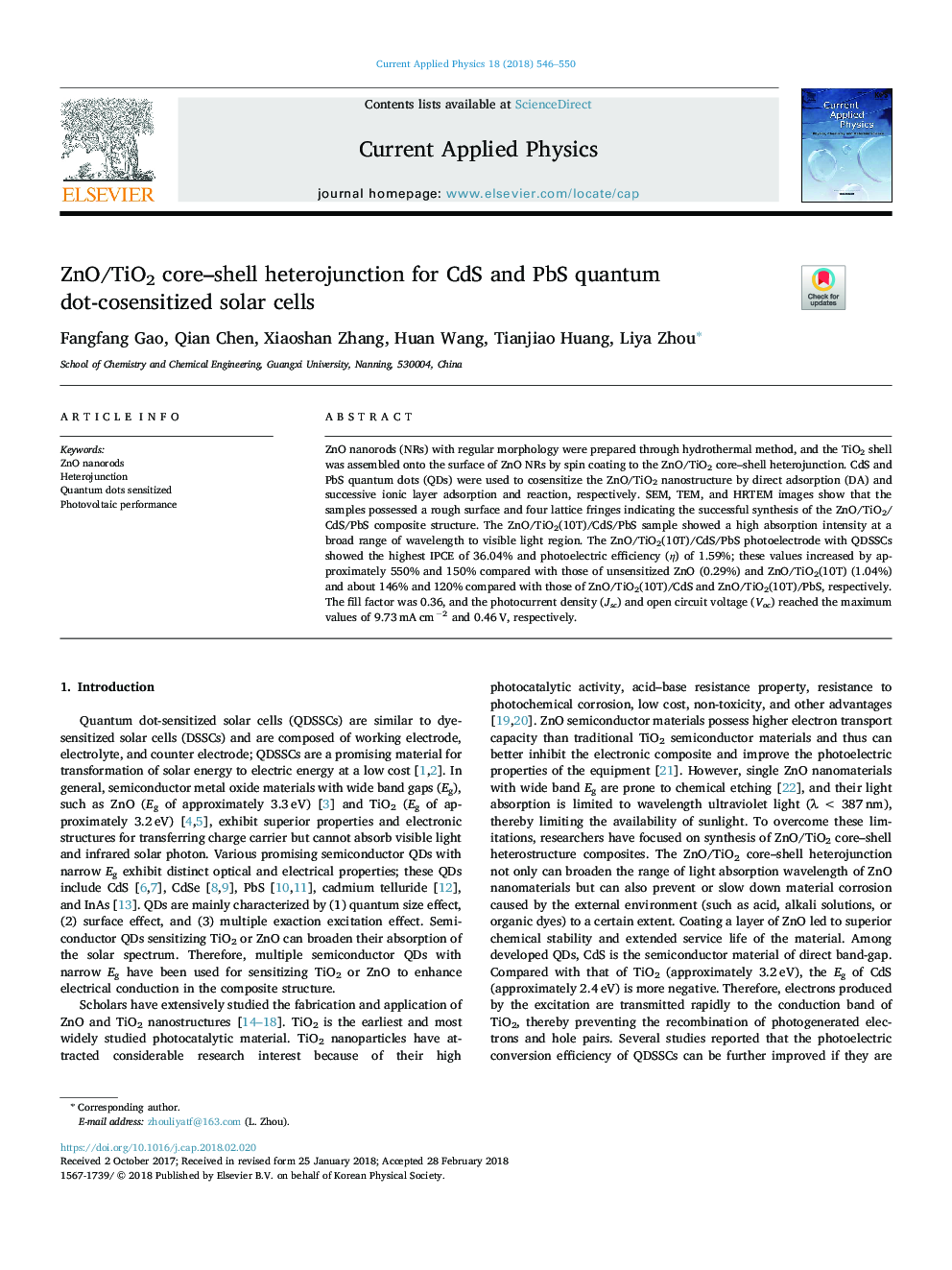| Article ID | Journal | Published Year | Pages | File Type |
|---|---|---|---|---|
| 8147811 | Current Applied Physics | 2018 | 5 Pages |
Abstract
ZnO nanorods (NRs) with regular morphology were prepared through hydrothermal method, and the TiO2 shell was assembled onto the surface of ZnO NRs by spin coating to the ZnO/TiO2 core-shell heterojunction. CdS and PbS quantum dots (QDs) were used to cosensitize the ZnO/TiO2 nanostructure by direct adsorption (DA) and successive ionic layer adsorption and reaction, respectively. SEM, TEM, and HRTEM images show that the samples possessed a rough surface and four lattice fringes indicating the successful synthesis of the ZnO/TiO2/CdS/PbS composite structure. The ZnO/TiO2(10T)/CdS/PbS sample showed a high absorption intensity at a broad range of wavelength to visible light region. The ZnO/TiO2(10T)/CdS/PbS photoelectrode with QDSSCs showed the highest IPCE of 36.04% and photoelectric efficiency (η) of 1.59%; these values increased by approximately 550% and 150% compared with those of unsensitized ZnO (0.29%) and ZnO/TiO2(10T) (1.04%) and about 146% and 120% compared with those of ZnO/TiO2(10T)/CdS and ZnO/TiO2(10T)/PbS, respectively. The fill factor was 0.36, and the photocurrent density (Jsc) and open circuit voltage (Voc) reached the maximum values of 9.73â¯mAâ¯cmâ2 and 0.46â¯V, respectively.
Related Topics
Physical Sciences and Engineering
Physics and Astronomy
Condensed Matter Physics
Authors
Fangfang Gao, Qian Chen, Xiaoshan Zhang, Huan Wang, Tianjiao Huang, Liya Zhou,
